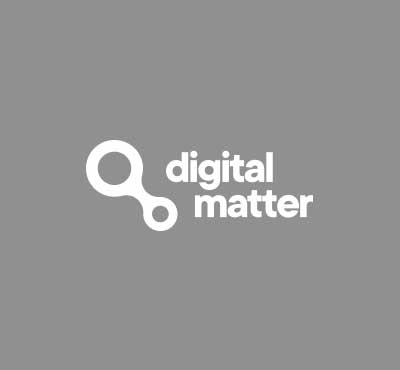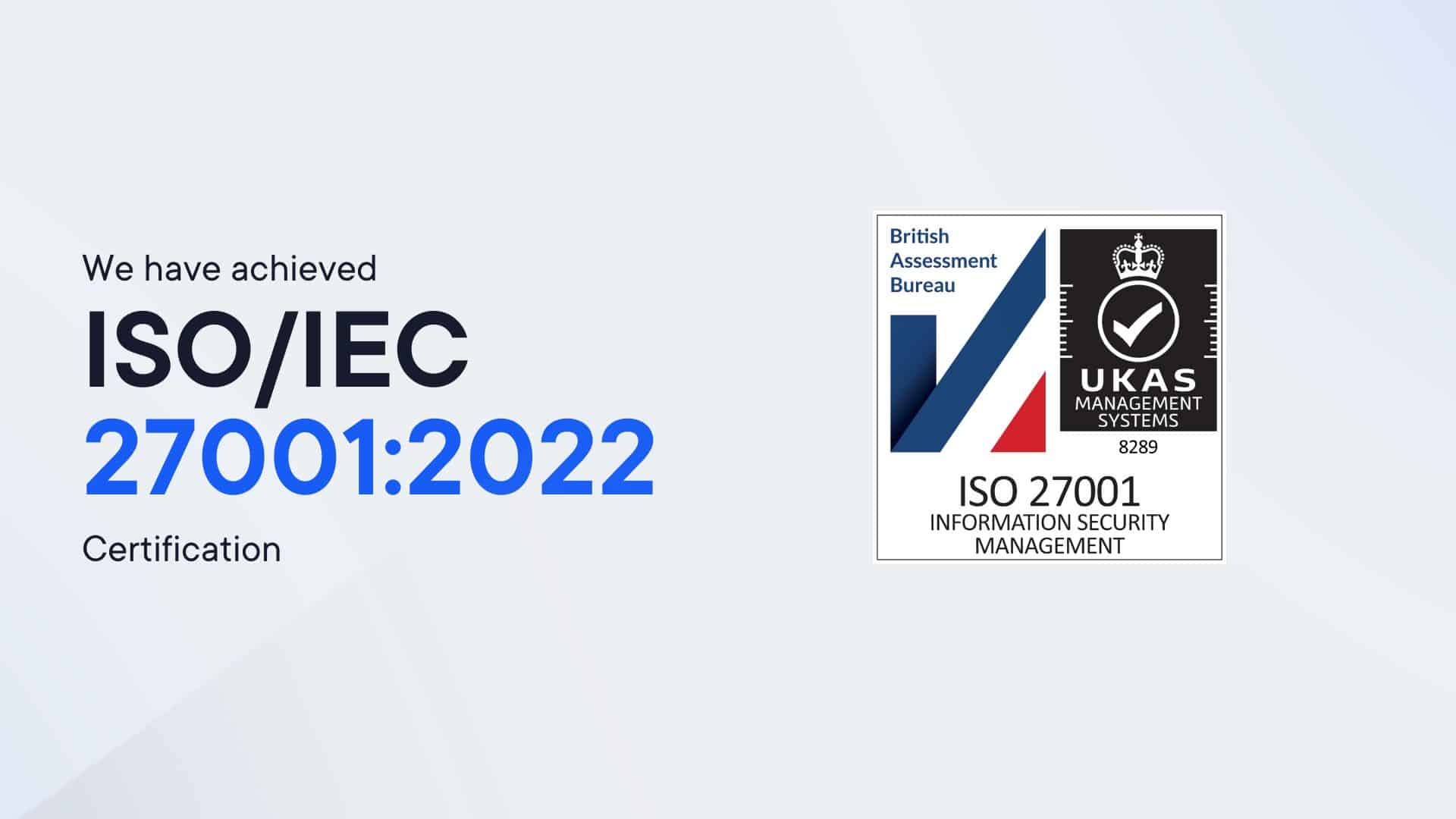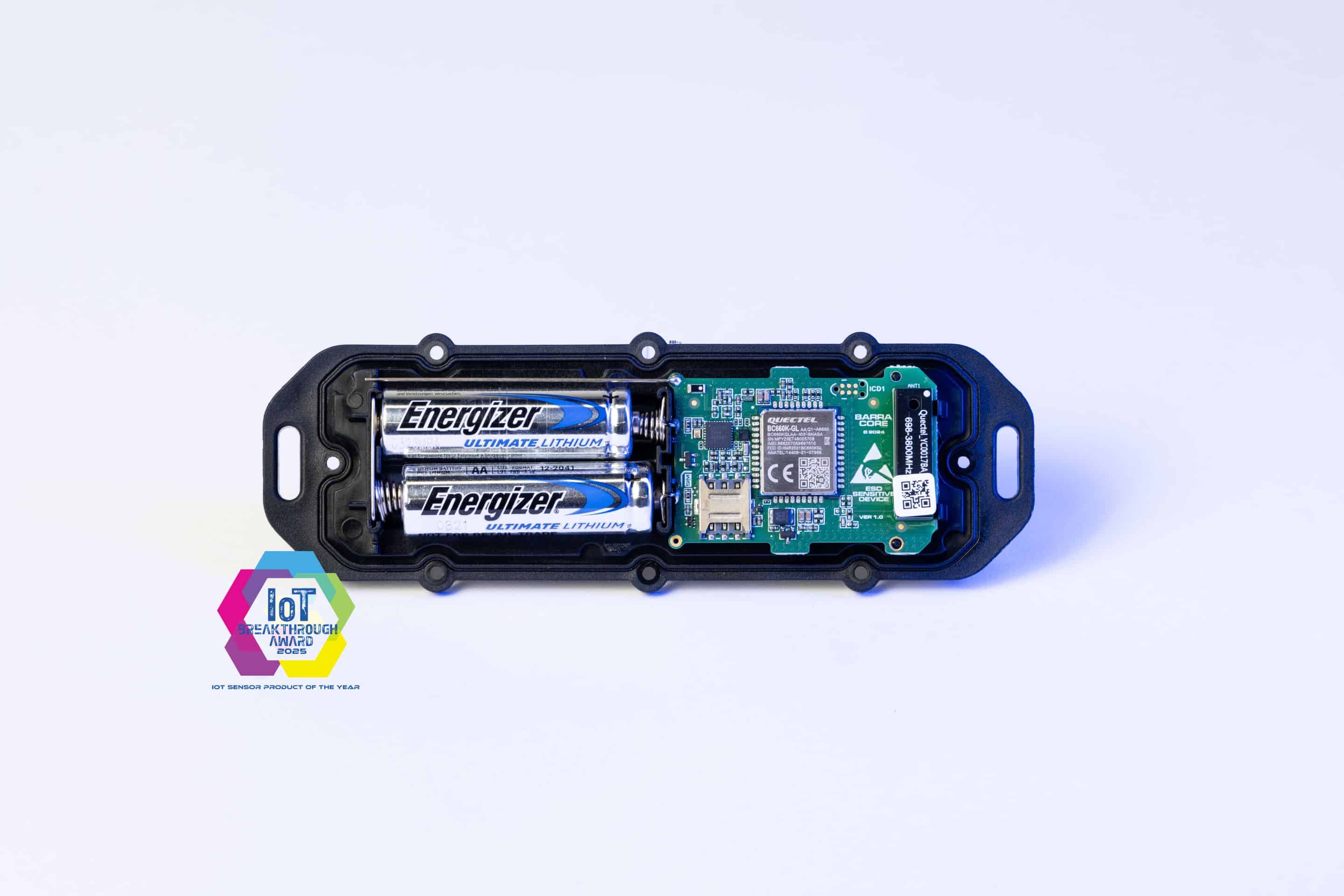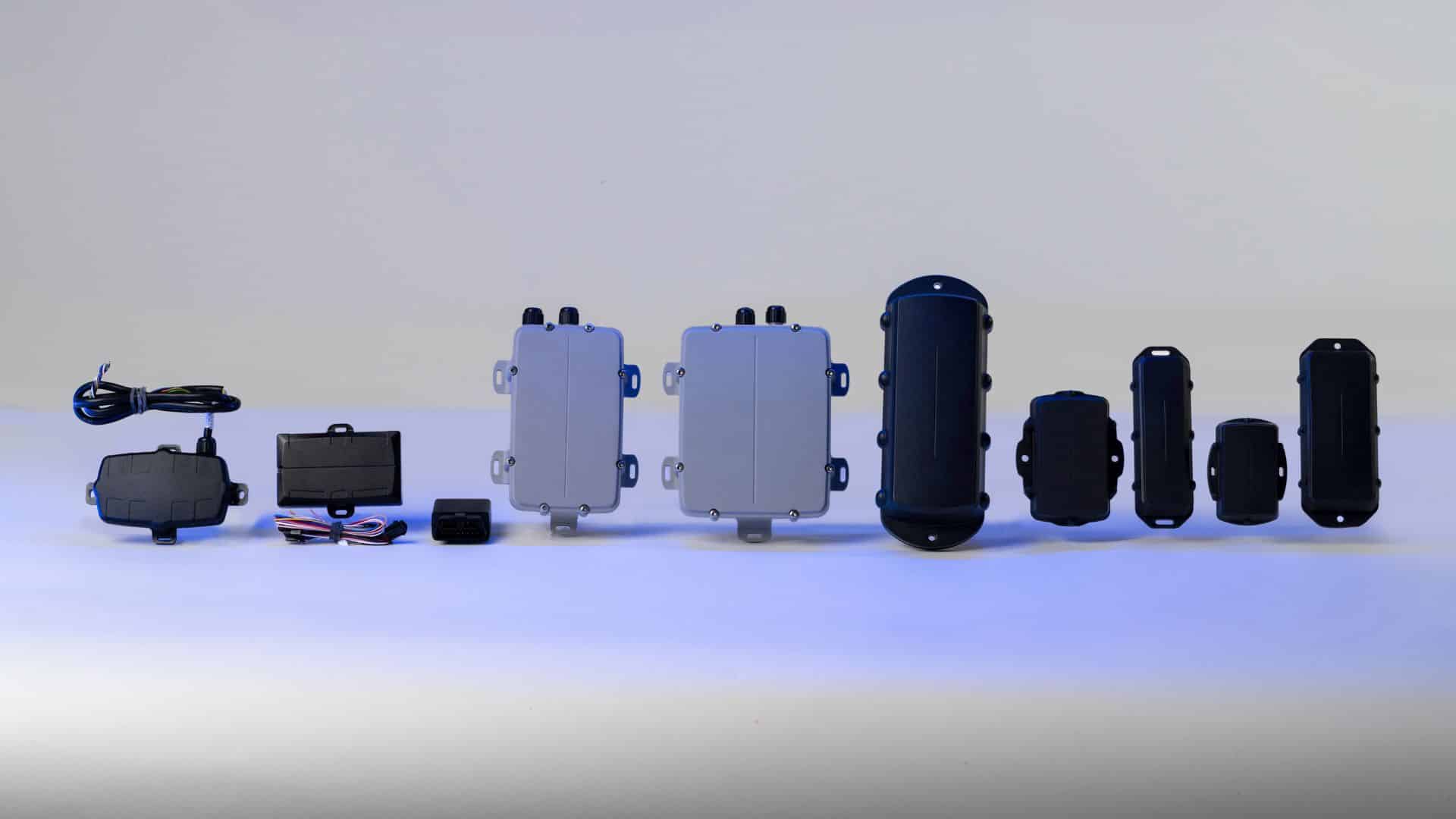Logistics Management and the Future of IoT Devices

Our mission is to help businesses connect, protect, and derive more value from their assets. As a leading global innovator, developer, and supplier of IoT solutions, we drive continuous innovation to enable our partners to deploy confidently at scale worldwide.
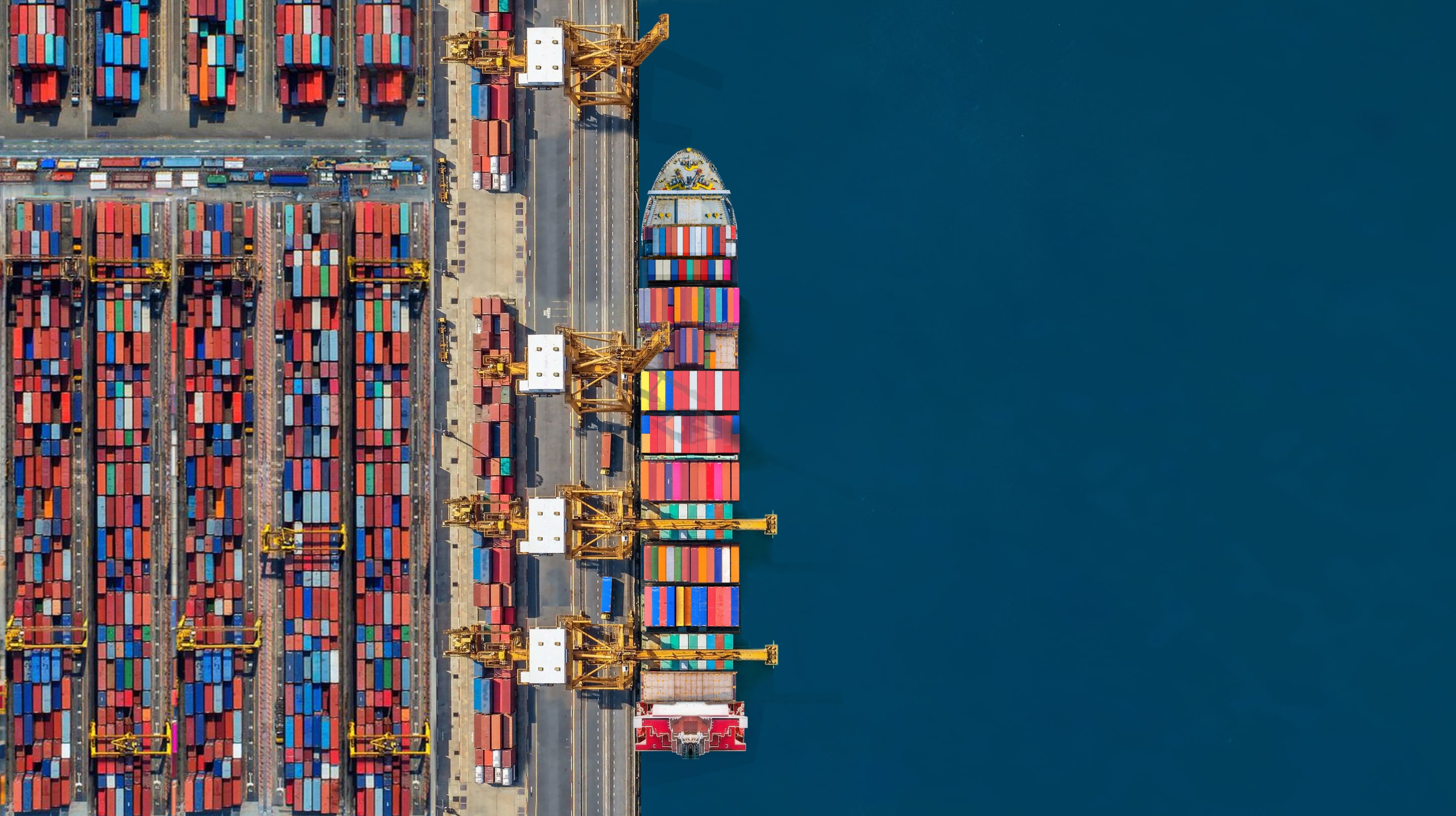
In a world that demands hyperconnectivity, the drive for smart logistics solutions is on the rise. In the intricate web of global commerce, the efficient management of logistics is paramount. As industries evolve, so do the tools at our disposal.
IoT (Internet of Things) devices are dominating a new era in logistics management where the industry is witness to the speedy acceleration of digitization within the sector. The pace at which IoT devices are being integrated can be seen clearly from the statistics, with the global IoT end-user solutions industry expected to witness a market share of $1.6 trillion by 2025.
IoT refers to the billions of physical devices around the world that are now connected to the internet, all collecting and sharing data. It’s not merely a buzzword, it has the capacity to transform logistics management, empower those that use it, and shape the modern supply chain landscape. Ensuring that the data collected is easily accessible and secure, particularly in relation to IoT implementations, is integral given the associated challenges of data security and regulatory compliance.
IoT solutions have been a huge benefit in more challenging times, like the COVID pandemic. During this period, IoT solutions helped continue important work, like shifting to remote operations to help protect the health and safety of employees.
Emerging IoT solutions are redefining various factors of logistics management. By embedding sensors, actuators, and connectivity into physical assets, IoT devices enable real-time monitoring, analysis, and control – paving the way for smarter, more efficient operations. Impacts can be felt in fleet management, asset tracking, supply chain visibility, and cold chain monitoring.
Introduction to IoT in Logistics
The logistics industry is undergoing a significant transformation with the integration of the Internet of Things (IoT) technology. IoT in logistics refers to the use of connected devices, sensors, and other technologies to enhance the efficiency, visibility, and responsiveness of supply chain operations. By leveraging IoT solutions, logistics companies can streamline their operations, reduce costs, and improve customer satisfaction. These connected devices enable real-time data collection and analysis, providing insights that drive smarter decision-making and operational efficiency. As the logistics sector continues to evolve, IoT technology stands at the forefront, transforming how goods are transported, tracked, and managed across the entire supply chain.
What is IoT in Logistics?
IoT in logistics involves the use of IoT devices, such as sensors, GPS trackers, and RFID tags, to collect and transmit data in real-time. This data can be used to track shipments, monitor inventory levels, and optimize routes, among other applications. IoT technology enables logistics companies to make data-driven decisions, improve operational efficiency, and enhance the overall customer experience. By integrating these advanced technologies, logistics companies can gain unprecedented visibility into their operations, ensuring that every aspect of the supply chain is optimized for performance and reliability.
IoT Solutions in Logistics Management
Staying ahead of the curve requires more than just efficiency, it requires precision. From real-time monitoring to asset condition tracking, IoT devices are transforming every aspect of logistics operations for improved business gains and a positive customer experience.
Here are some key examples:
Fleet Tracking and Management
Global urbanization and population growth is projected to increase by 23% in 2050, which equates to adding an estimated additional 2.5 billion people to urban areas, doubling the demand for passenger mobility. To meet demand, smart technology is a no-brainer.
Incorporating battery-operated GPS trackers into fleet tracking logistics management gives businesses better visibility into their vehicles, with real-time insights into their fleet. Equipped with GPS trackers and sensors, these devices provide continuous updates on vehicle location, speed, condition monitoring and performance metrics.
Fleet management can benefit from route optimization, asset utilization, and monitored driving behavior. IoT devices can help reduce waste, schedule maintenance proactively, and maintain optimal fleet utilization leading to cost savings.
Trailers and Dollies GPS Tracking
For logistics companies managing trailers and dollies, an IoT GPS tracking system is integral. By installing IoT devices on these assets, businesses gain visibility into their whereabouts and usage patterns. Real-time location data enables efficient asset allocation, theft prevention, and streamlined operations within warehouses and distribution centers.
Asset Condition and IoT Cold Chain Monitoring
In industries handling temperature-sensitive goods, IoT plays an important role in diminishing the risk of spoilage or contamination. By adopting IoT device sensors in cold chain monitoring, they can monitor temperature, humidity, and other environmental factors, ensuring they are compliant with regulatory standards.
Shipping Container GPS Tracking
IoT-enabled GPS tracking transforms the way shipping containers and maritime fleet tracking are managed and monitored globally. By equipping containers with IoT devices, companies can track their movements in real-time, optimize shipping routes, and prevent loss or theft.
Some examples of wireless devices, such as radio-frequency identification (RFID) tags, eSIM and global positioning system (GPS) sensors, help improve supply chain efficiency and reduce transit times, ultimately driving cost savings and customer satisfaction.
Using IoT technology means AI algorithms can process data that will assist route management and improve security. This level of tracking allows issues like maintenance problems to be predicted and prevented.
Supply Chain Visibility and Tracking
The top supply chain trends of today are the result of three main issues, becoming particularly apparent since the pandemic – lack of visibility, transparency, and traceability.
End-to-end visibility is paramount in modern supply chain management, bridging the gap between manufacturers, suppliers, distributors, and end consumers. IoT technology offers the solution.
By integrating IoT remote monitoring sensors and data analytics platforms, businesses can track inventory, monitor delivery status, and identify bottlenecks in real time. IoT data facilitates dynamic decision-making in logistics and supply chain management, enabling companies to streamline operations, reduce inefficiencies, and make informed predictions based on interconnected data from multiple sources. This proactive approach allows faster decision-making, improves order accuracy, and improves overall supply chain performance.
Parts, Accessories, and Equipment Tracking
IoT solutions are not limited to tracking vehicles and containers, they also extend to equipment, parts, and accessories within logistics management. By tagging assets with equipment GPS tracking devices, businesses can monitor their location, usage, and maintenance history. This data-driven approach maximizes asset utilization, reduces downtime, and prolongs equipment lifespan, driving operational efficiency and cost savings.
Rental Equipment GPS Tracking
For businesses renting out equipment, GPS IoT devices are integral for IoT asset tracking management and theft prevention. By equipping rental assets with IoT devices, companies can track their location and usage, enforce rental agreements, and optimize asset utilization. This ensures that rented equipment is efficiently used and returned on time, maximizing revenue and overall customer satisfaction.
Containers, Pallets, Returnable GPS Tracking
IoT asset tracking solutions offer visibility and control through pallet GPS, trailer tracking, and returnable packaging IoT solutions. Tagging IoT devices allows businesses to track their movements, monitor inventory levels, and streamline asset return processes. This improves asset traceability, reduces loss, and enhances supply chain efficiency.
Inventory Management and Warehousing
IoT technology can be used to optimize inventory management and warehousing operations. By using IoT sensors, BLE tags, and asset trackers, logistics companies can track inventory levels in real-time, automate inventory tracking, and optimize storage and retrieval processes. This can lead to reduced inventory costs, improved stock levels, and enhanced supply chain visibility. With IoT asset trackers providing continuous updates, logistics companies can ensure that their warehouses operate at peak efficiency, minimizing the risk of stockouts or overstocking and ensuring that products are always available when needed.
IoT Solutions that Benefit Logistics Management
Integrating IoT solutions into logistics operations provides a variety of benefits. As well as improving operations that aid in increased revenue, it can help satisfy those involved in the entire lifecycle of the operation, helping to meet or exceed client, customer, and supplier expectations.
Here are some of the ways IoT devices are transforming the industry:
Increased Efficiency
IoT solutions serve as a catalyst for operational efficiency in logistics management. By seamlessly integrating sensors, data analytics, and connectivity, IoT devices enable real-time monitoring and the streamlining of processes. Whether that’s in inventory management, route planning, or warehouse operations.
In route planning in particular, studies have shown that more effective routing can reduce driver hours by almost 25% with IoT devices, logistics operators can identify bottlenecks, automate repetitive tasks, and adapt quickly to changing demands, ensuring smooth and agile operations.
Improved Safety
Safety and compliance are focal in logistics management, and IoT devices play an important role in improving standards throughout the supply chain. From fleet tracking to driver fatigue detection and warehouse safety monitoring, IoT helps identify potential hazards before they escalate, safeguarding the well-being of personnel and assets. Devices can monitor vehicle performance, driver behavior, and environmental conditions in real-time, demonstrating proactive risk management and accident prevention.
Regulatory Compliance
The sector is carefully regulated, IoT helps to meet industry standards by providing the user with better control of their operations. This might be through video surveillance, authenticity verification, or product tracking.
Minimizing Environmental Impact
Improving the efficiency of transport, like better route planning and driver competency can help produce cleaner operations by cutting carbon emissions and reducing waste.
Cost Savings
An attractive benefit of IoT solutions is their ability to achieve greater financial sustainability and competitive advantage in a cost-conscious market. By utilizing resources more efficiently, minimizing waste, and reducing manual intervention, IoT devices help organizations cut operational expenses across the business. Whether it’s reducing fuel consumption, or helping to prevent costly breakdowns, IoT provides smarter decision-making that translates into tangible cost savings.
Better Asset Management
IoT devices are a game-changer in managing assets. By equipping assets with IoT asset tracking devices, businesses gain supply chain visibility including insight into location, condition, and usage patterns. This not only minimizes the risk of loss or theft but also tracks warehouse capacity, maintenance scheduling, and inventory management. With IoT solutions, logistics operators can maximize the value of their assets, minimize downtime, and ensure seamless operations from end to end.
Digital Matter IoT Devices for Logistics Management
Managing logistics from the point of origin to the point of consumption involves numerous complex steps. Each step presents unique opportunities for inaccuracies, asset loss, and other variables that can affect performance, productivity, and the bottom line.
Digital Matter offers an extensive portfolio of battery-powered and wired GPS asset tracking devices, designed for precise logistics tracking anywhere in the world. Our products feature a wide selection of connectivity and location options to meet various industry needs.
Implementing IoT in Logistics
Implementing IoT technology in logistics requires careful planning and execution. Logistics companies must consider the specific challenges and opportunities of their operations and develop a tailored IoT strategy. This involves assessing the current infrastructure, identifying the key areas where IoT can add value, and selecting the appropriate IoT solutions that align with their business goals. By taking a strategic approach, logistics companies can ensure a smooth integration of IoT technology, maximizing its benefits and minimizing potential disruptions.
Overcoming Challenges in IoT Adoption
One of the main challenges in adopting IoT technology in logistics is integrating it with existing systems and processes. Logistics companies must ensure that their IoT solutions are compatible with their existing infrastructure and can be easily integrated with other systems. Additionally, logistics companies must address concerns around data security, privacy, and scalability. By overcoming these challenges, logistics companies can unlock the full potential of IoT technology and achieve significant benefits in terms of operational efficiency, cost reduction, and customer satisfaction. This involves investing in robust cybersecurity measures, ensuring data privacy compliance, and designing scalable IoT solutions that can grow with the business.
How IoT is Shaping the Future of Supply Chain and Logistics
Futureproofing in logistics management means understanding and embracing the latest technological advancements. Gartner predicted that by 2025, more than 50% of logistics companies will have a technological take-over of their operations, and with productivity levels said to elevate over 20% by 2035, there’s no surprise that we are witnessing innovative new logistics trends. Here are some of them:
IoT Solutions Showcase Emerging Technologies
TIM Smart Gloves
These IoT integrated gloves provide a hands-free solution destined to challenge traditional scanning operations, increasing efficiency, and reducing errors. The gloves provide real-time connectivity offering a solution to inventory control challenges and operational visibility.
Advanced Predictive Analytics and Predictive Maintenance
Advanced predictive analytics is the act of using algorithms and real-time data to predict fluctuations in supply demand, optimize inventory levels and mitigate stockouts.
Max Savonin, CEO at Keenethics describes one of the most common logistics challenges and how IoT solutions are paving the way.
“Firstly, lack of responsibility in tracking is a big challenge. If someone fails to say where they put a certain object, finding it can take weeks. Secondly, many tracking solutions are extremely difficult to maintain. Excel tables with hundreds of entries are notorious for being overwhelming. Thankfully, the evolution of modern technologies is finally solving this problem…”
“I advise company owners to look at the smart tracker market. RFID and geo position trackers are becoming increasingly cheap. It’s now possible to attach them to almost any object you have. What will this technology give you? Primarily, you’ll be able to track all object locations. Moreover, it’ll be easier for the workers to register when they work with certain tools. They’ll simply have to scan barcodes at certain locations.”
User-Focused Insurance and Vehicle Tracking
Insurance providers can offer user-based insurance (UBI) to fleet owners offering more accurate rates based on usage, driver behavior and other variables. Other models available include pay as you drive (PAYD) and pay how you drive (PHYD), providing a more truthful representation of usage and a fairer model to cost, ultimately leading to a better customer experience.
Another IoT solution gaining traction is the Stolen Vehicle Tracking (SVT), or Stolen Vehicle Recovery (SVR). When a theft is reported, the SVT system communicates with the police to locate and recover the stolen vehicle.
Smart Robots
Smart robots are expected to be a game-changer in warehouse operations, with Gartner predicting that 75% of organizations will adopt a robotic solution by 2026.
“Labor availability constraints, rapidly rising labor rates and the residual impacts of COVID-19 will compel most companies to invest in cyber-physical systems, especially intralogistics smart robots,” said Dwight Klappich, Vice President Analyst with the Gartner Supply Chain practice. “The good news is that there are already many flexible robotics use cases, and it is important to evaluate the best fits to an organization’s specific needs.”
Sustainability Initiatives
IoT is expected to play a pivotal role in driving sustainability initiatives within logistics management. By monitoring energy consumption, emissions, and resource usage, IoT solutions enable businesses to reduce their ecological footprint and maximize resource efficiency.
Yury Shamrei, CEO and Founder at SumatoSoft explains. “IoT plays a vital role in sustainability efforts by optimizing routes, reducing fuel consumption, and minimizing environmental impact. It aligns with the growing demand for eco-friendly transportation solutions.”
The Logistics Management Revolution that Promises to Drive the Future of Supply Chain and Logistics
IoT solutions in logistics are not just tools, they are a way to transform and reshape the industry. Logistics operators gain elevated visibility, control, and insight into their operations, enabling them to navigate complex supply chain challenges with agility and precision.
Logistics leaders driven by innovation and seeking positive change must stay informed with the technologies and trends, and embrace IoT solutions for a future where efficiency, sustainability, and innovation will converge to create a logistics management ecosystem that benefits a global society.
Related News

Let’s Get Started
Submit the form to get in touch with a Digital Matter representative from your region.
Contact UsSubscribe
Get helpful content delivered straight to your inbox.
Let’s Get Started
Submit the form below to get in touch with a Digital Matter representative from your region.

Looking for support? Check out our knowledge base.

Information on becoming a Digital Matter Partner.

Information on pricing, availability, and proof of concept.

Guidance on selecting the right products for your application.


